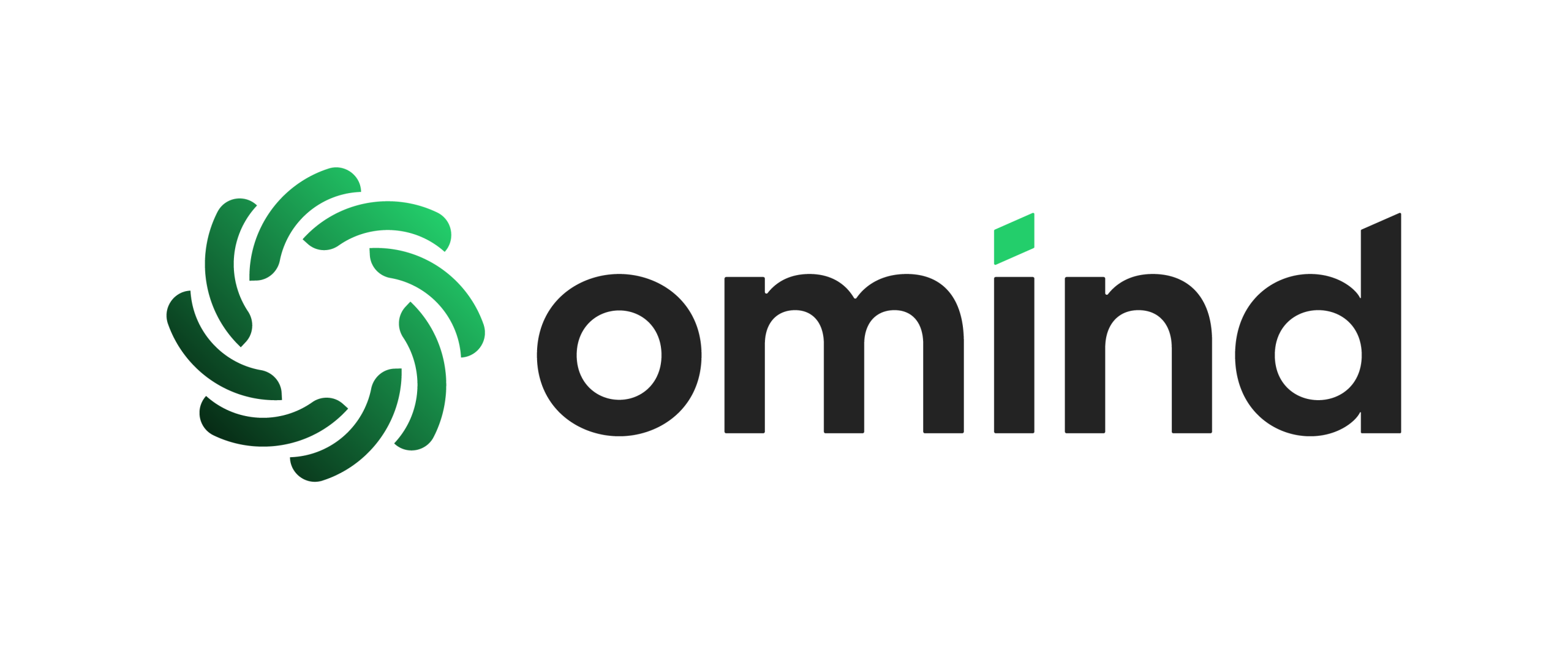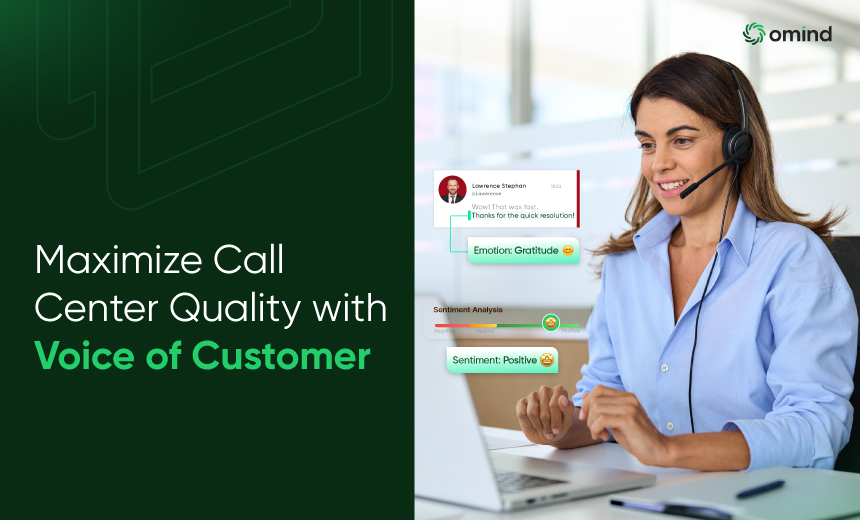In customer service, the customer’s voice isn’t just feedback—it’s the secret sauce for survival. Studies show that a strong Voice of Customer (VoC) program can increase retention rates by up to 25%. That’s not pocket change: for call centres juggling thousands of interactions a day, it’s the difference between bleeding customers and building loyalty. By 2025, listening to the customer isn’t optional—it’s mission-critical.
This blog dives into the strategies and tools for capturing VoC, the role of AI in amplifying it, and a step-by-step plan to turn raw feedback into CX gold.
Key Takeaways
- • A strong Voice of Customer (VoC) program boosts retention by up to 25% and drives 20% higher CSAT and 15% better loyalty, per Gartner.
- • Omind’s AI-powered tools analyze 100% of interactions, using sentiment analysis and transcription to uncover real-time customer insights.
- • Multiple VoC channels—surveys, social listening, CES—combined with AI provide a 360° view of customer needs and pain points.
- • Real-time feedback and coaching from Omind’s AI QMS improve agent empathy, compliance, and operational efficiency.
- • Acting on VoC insights and closing the feedback loop builds customer trust and drives proactive CX improvements.
Why Voice of Customer Matters in Call Centers
Call centers are the heartbeat of the customer experience. Every call, chat, or email is a live focus group where customers tell you precisely what they think—whether you want to hear it or not. Ignore it, and you risk churn. Capture it, and you gain a competitive edge.
Here’s why Voice of Customer programs matter:
- Spot friction before it festers: Billing headaches, long hold times, confusing policies—if customers keep complaining, VoC will surface it early.
- Sharpen coaching: When 72% of customers say agents lack empathy (PwC), training fueled by actual customer feedback becomes priceless.
- Build trust: Customers who see feedback acted upon are 2x more likely to stay. Think of it as “relationship ROI.”
- Boost CX metrics: According to Gartner, companies with robust VoC programs outperform their peers by 20% in customer satisfaction and 15% in loyalty.
“The most expensive feedback is the one you never collect—because it shows up later as churn.” — Kishore Saraogi, Co-founder & COO, Fusion CX
Techniques for Capturing VoC
Great VoC programs cast a wide net, mixing quick-hit surveys with deeper listening. The trick is to blend scale with context.
Together, these approaches reveal both the “what” (quantitative metrics) and the “why” (qualitative insight).
The AI Advantage: Omind’s Role in VoC
Surveys capture a sliver. AI captures the story. Traditional programs rely on 2–5% of interactions. AI analyzes 100% in real-time, surfacing signals that humans would miss.
With Omind’s sentiment analysis tools:
- Tone detection: Flags frustration or delight instantly. A sigh or long pause can be as telling as words.
- Compliance monitoring: Identifies missed disclosures before they result in fines.
- Actionable coaching: Feedback seamlessly integrates into training modules, transforming critique into actionable growth.
- Omnichannel unification: From calls to tweets, Omind stitches every voice into one narrative.
“VoC is no longer about asking questions—it’s about listening at scale. AI gives us the ears to hear every customer, every time.” — Robin Kundra, VP Customer Success – Transformation, Omind
6 Steps to Implement a Strong VoC Program
Rolling out VoC is less about tech and more about discipline. Here’s the playbook:
- Define Objectives – Don’t Chase Vanity Metrics. Determine whether the goal is to reduce churn, improve compliance, or increase CSAT.
- Select Feedback Channels – Surveys? Analytics? Social listening? Utilize multiple sources to gain a 360° view.
- Deploy AI Tools – With Omind’s sentiment analysis, transcription, and QA, you capture insights at scale without drowning in data.
- Analyze & Prioritize – Focus on patterns, not anecdotes. If 40% of callers mention long wait times, that’s your red flag.
- Act on Insights – Close the Gap between Data and Delivery. Feed findings into coaching, workflows, or product tweaks.
- Close the Loop – Inform customers about the changes. Even a line like, “We reduced hold times after your feedback”, builds trust.
Conclusion
The Voice of the Customer is the North Star for Call Center Quality Improvement. By combining classic methods like surveys with modern AI tools, leaders move from reactive fixes to proactive strategy. With Omind’s AI QMS, every customer whisper becomes a data point, every complaint a roadmap, and every compliment a coaching moment.
Don’t just hear your customers. Act on them. That’s how loyalty is built.
Ready to amplify your VoC strategy? Schedule a demo with Omind today.
About the Author
Robin Kundra, Head of Customer Success & Implementation at Omind, has led several AI voicebot implementations across banking, healthcare, and retail. With expertise in Voice AI solutions and a track record of enterprise CX transformations, Robin’s recommendations are anchored in deep insight and proven results.


